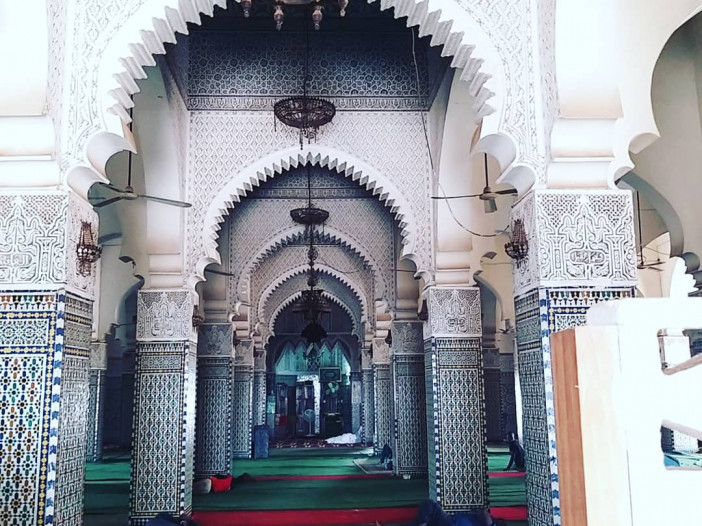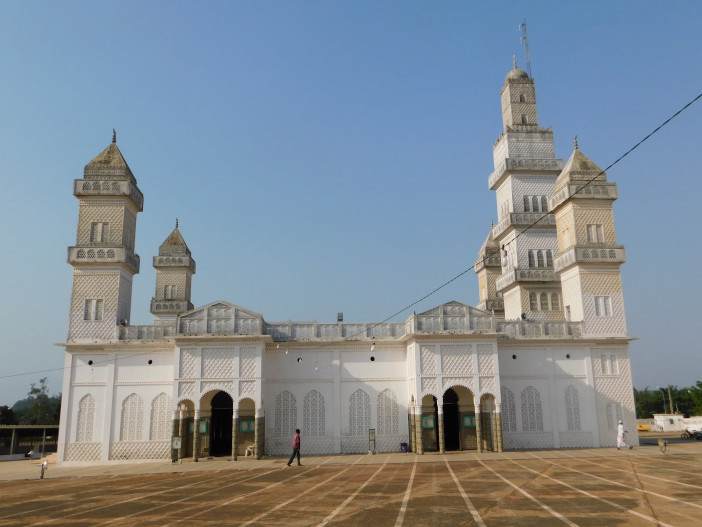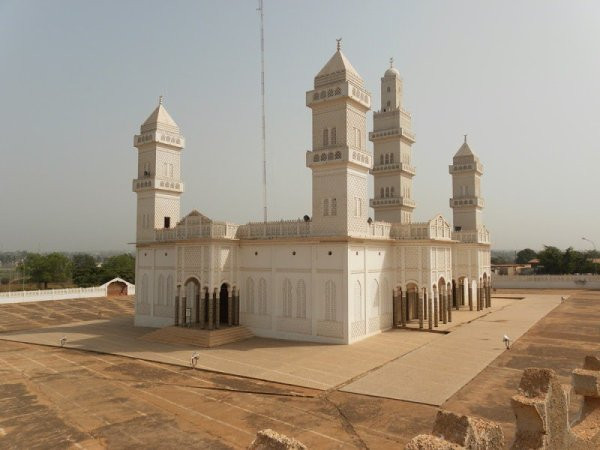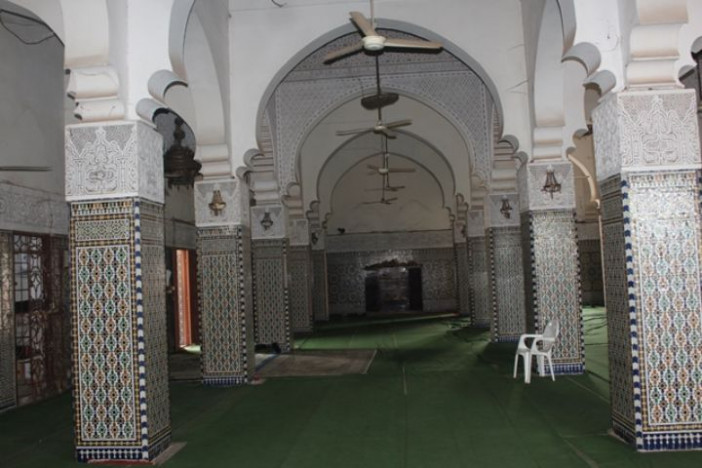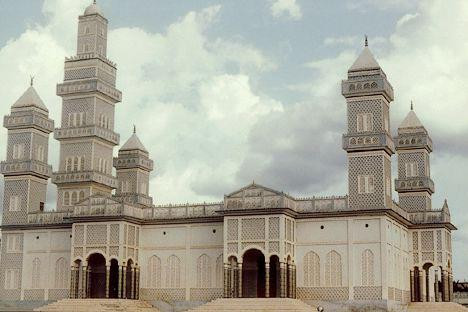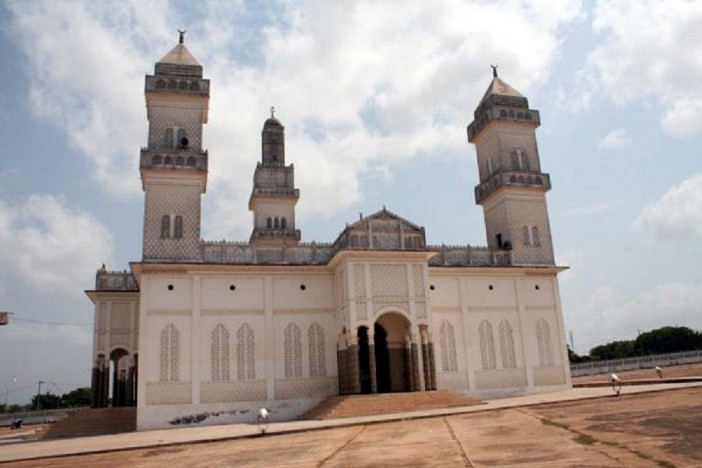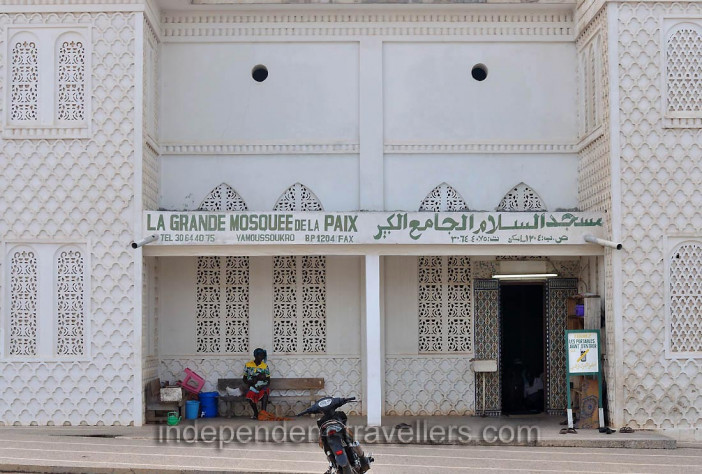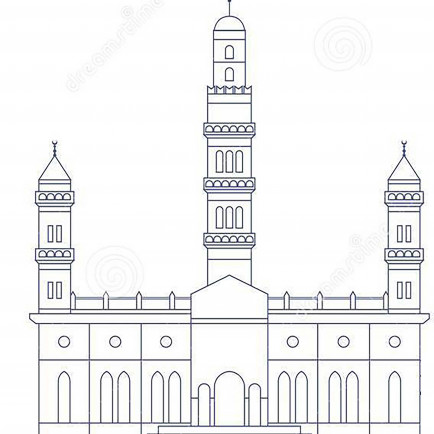The Grand Mosque of Yamoussoukro
History
The construction project of this building dates back to 1963. At that time, Houphouët-Boigny solicited a certain Balla Camara, a mason by training, to build the great mosque of Yamoussoukro, located opposite the basilica, just across the lake. Not feeling like taking on such a responsibility, he initially refused, claiming that he did not have the required skills. For this reason, the "Old Man" sent him to Senegal for several months, so that he could complete his training in religious masonry and begin construction. The work of the mosque will be completed in 1968.
Urban and Architectural
A real little marvel of sobriety in one color. With its square minarets, it is adorned with lattice work, which gives its cladding the appearance of lace paper, but also with semicircular arches above the entrance doors. The mosaic tiles that can be found inside were imported from Morocco, while the ironwork of the heavy wrought doors is from France.
Description
At the back of the courtyard of the mosque is the tomb of the builder Balla Camara, known as "El Hadj Balla", who went to Mecca before his death ("el Hadj").
References
https://ci.opera.news/ci/fr/religion/2c88ca5392cad09edca86622d87bb89a
https://independent-travellers.com/ivory_coast/yamoussoukro/74.php
http://belletammy.blogspot.com/2019/12/visiting-yamoussoukro-cote-divoire.html
Details
Location
RP6F+HJ3 Grande Mosquée de Yamoussoukro, Yamoussoukro, Côte d’Ivoire
Worshippers
555
Owners
Houphouët-Boigny
Architect Name
Year of Build
1963
Area
1110
Drawings
Map
History
The construction project of this building dates back to 1963. At that time, Houphouët-Boigny solicited a certain Balla Camara, a mason by training, to build the great mosque of Yamoussoukro, located opposite the basilica, just across the lake. Not feeling like taking on such a responsibility, he initially refused, claiming that he did not have the required skills. For this reason, the "Old Man" sent him to Senegal for several months, so that he could complete his training in religious masonry and begin construction. The work of the mosque will be completed in 1968.
Urban and Architectural
A real little marvel of sobriety in one color. With its square minarets, it is adorned with lattice work, which gives its cladding the appearance of lace paper, but also with semicircular arches above the entrance doors. The mosaic tiles that can be found inside were imported from Morocco, while the ironwork of the heavy wrought doors is from France.
Description
At the back of the courtyard of the mosque is the tomb of the builder Balla Camara, known as "El Hadj Balla", who went to Mecca before his death ("el Hadj").


